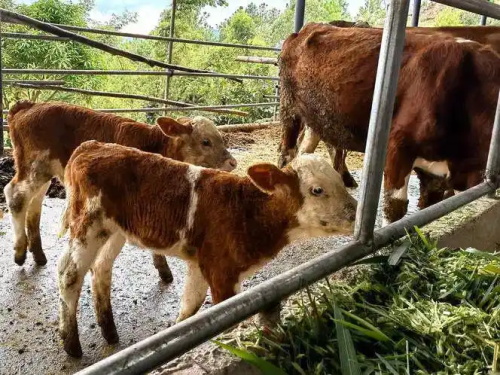Hey, I’ve been meaning to share something I’ve been working with on the farm—using an ultrasound system for twin detection in animals. It’s honestly one of those tools that just makes life smoother when you’re juggling multiple tasks, especially with livestock. I’ll break down how it fits into day-to-day veterinary routines, why it’s become such a game-changer, and share some chat-style tips that I wish someone had told me sooner.

Getting comfortable with the ultrasound system
When you first bring a Veterinary ultrasound system onto the farm, it might feel a bit high-tech. I remember loading the gear, trying to figure out the controls, and thinking, “Well, how different can it be from the basic pregnancy checks I’ve done before?” What surprised me is how intuitive it gets. You sit down, warm up the probe, apply some gel, and start scanning. The system shows real-time images in black-and-white (or sometimes color Doppler), and pretty quickly you spot two distinct amniotic sacs or two fetal heads—then you know you’re looking at twins.
Why twin detection matters so much in veterinary care
Detecting twins isn’t just a neat diagnostic trick—it has real impact:
Nutrition and care planning
Twins often need closer monitoring. Adjusting feed so the dam gets enough nutrients for both helps avoid growth issues or pregnancy complications.Labor and delivery preparedness
With twins, you’re more likely to run into birthing difficulties. Catching that early means you can be ready—with assistance or backup—rather than caught off-guard.Health checks
You’ll want to monitor fetal growth closely. Nutrition might be prioritized differently if there are two growing fetuses instead of one.
A casual walk-through of how I use it
Let’s say I’ve got a pregnant ewe. I bring out the ultrasound system around day 30 to 40 of gestation—tourabilities vary—but that’s when twin structures become clearer. I’ll warm up the system, apply gel, and scan at a gentle angle near the udder area. After I find a fetal heartbeat and sac, I move sideways or angle a bit to catch whether there’s another sac. With the right view, you spot two. That moment—it’s like, “There they are!”
Once confirmed, I mark it in the records, adjust feeding plans, and keep an eye on her more closely as delivery approaches.
Why it’s human-like helpful, not sci-fi gadgetry
The system doesn’t talk back. There’s no AI rambling—but it sure does make my daily conversations with vet techs easier. I can say, “She’s carrying twins, plan for assistance,” instead of guessing. It’s practical, not flashy.
Quick comparison in an HTML table
Here’s a small table summarizing what twin detection adds versus a regular check:
| Scenario | Single Fetus | Twins Detected |
|---|---|---|
| Nutrition Requirements | Standard late-gestation feed | Higher energy and protein to support both |
| Labor Planning | Routine monitoring | Prepared for possible dystocia, have assistance ready |
| Fetal Monitoring | May check once or twice | More frequent checks to ensure both are developing |
That illustrates the practical side—simple but helps guide decision-making.
Real stories—keeping it down to earth
Just the other week, I scanned a doe (female deer) in my small-scale wildlife setup. I wasn’t expecting twins, but the system flagged something odd—two heart shapes pulsing away. The doe’s body score wasn’t stellar, so we boosted her nutrition intake, adjusted hay mix, and prepped a quiet birthing space. Delivery went smoothly, with two healthy fawns, and minimal stress on the mother.
That’s the part I enjoy sharing with colleagues—real-world, empathetic moments.

Fitting ultrasound twin detection into regular workflows
Here’s roughly how I fit it into a monthly calendar:
Day 30–45: first scan—check pregnancy and detect twins.
Mid-gestation: follow-up scan if twins confirmed.
Late gestation: monitor fetal growth, assess fetal viability.
Right before expected delivery: final check to ensure everything’s in place; twin birth might need extra hands.
Why I’d recommend it to other vets and farmers
Non-invasive and stress-free—you don’t need to worry about hurting the animal.
Pocket-friendly decisions—feeding, staffing, veterinary care can be tailored.
Better outcomes—healthier offspring and more prepared care reduces complications.
Confident communication—you’re not guessing. You know what you’re dealing with.
Wrapping up, farmer-style
So if you’re in veterinary work, livestock management, or wildlife care, a solid ultrasound system for twin detection is like having a smart friend by your side. It helps you see what’s really happening inside, plan ahead, and avoid surprises. I’ve found that once you start using it, you can’t imagine going back.
It’s not flashy boardroom jargon—it’s about practical peace of mind. Just another tool that helps everyone involved—animal, caretaker, vet—feel more prepared and calm.
tags: Twin DetectionUltrasound System
Text link:https://www.bxlultrasound.com/ns/886.html


